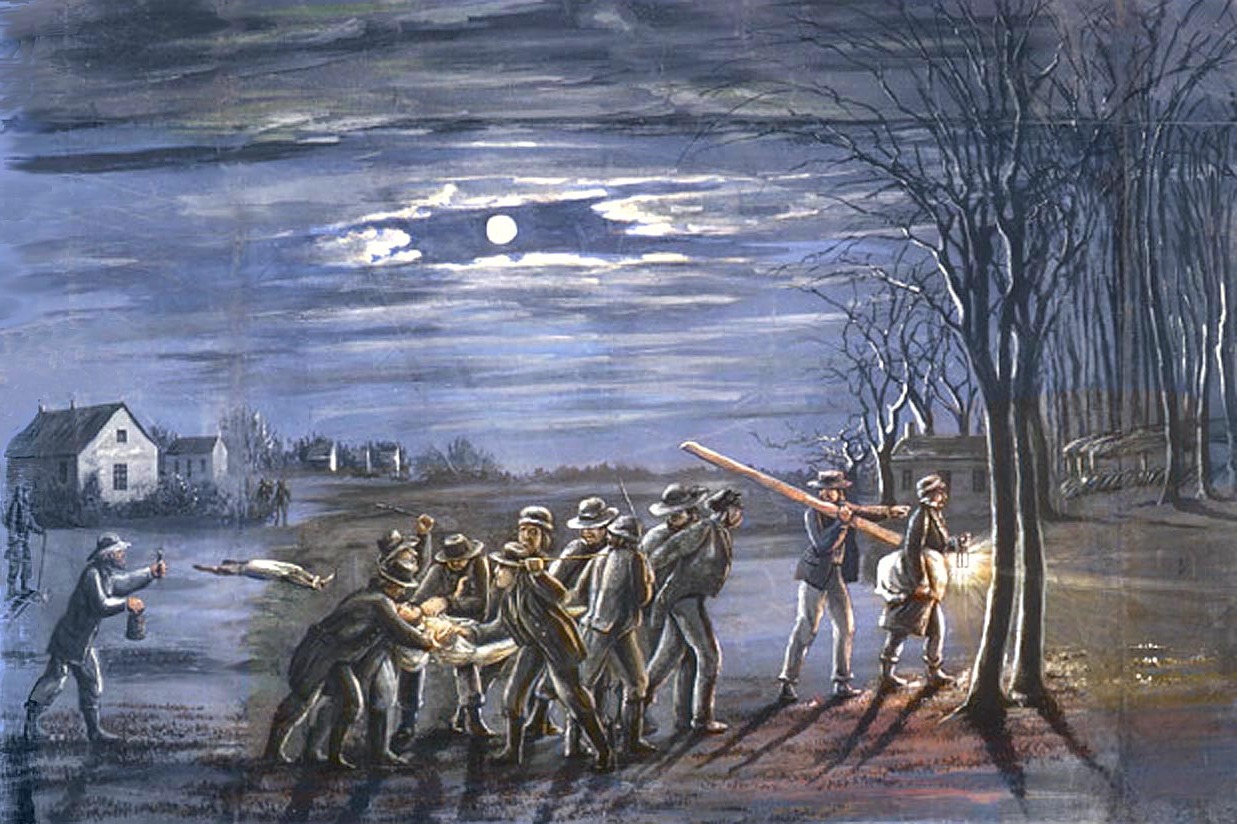
What is tar and feathering? This question might conjure images of old-timey punishments or pirate tales. Tar and feathering was a form of public humiliation and punishment used primarily in the 18th and 19th centuries. It involved covering a person with hot tar and then applying feathers, making them look ridiculous and causing physical pain. This method was often used by mobs to punish and shame individuals who were seen as wrongdoers or traitors. While it might seem like something out of a history book, understanding this practice gives us insight into past societal norms and the lengths people went to enforce them.
Key Takeaways:
- Tar and feathering, a brutal punishment from medieval times to the American Revolution, caused severe physical and psychological trauma, leading to its decline and prohibition in modern legal systems.
- Despite its historical significance, tar and feathering is now viewed as a violation of human rights and a symbol of protest against oppressive authorities, reflected in popular culture and historical education.
Origins of Tar and Feathering
Tar and feathering has a long history, often associated with punishment and public humiliation. Here are some intriguing facts about this practice.
-
Medieval Roots: The earliest recorded instance of tar and feathering dates back to the 12th century, during the Crusades. King Richard I of England ordered it as a punishment for thieves.
-
Sailor Justice: In the 18th century, sailors used tar and feathering to discipline crew members who broke maritime laws.
-
American Colonies: This practice became popular in the American colonies as a way to punish tax collectors and loyalists during the Revolutionary War.
-
Symbol of Rebellion: Tar and feathering was a symbol of rebellion against British rule, often used by the Sons of Liberty.
The Process of Tar and Feathering
Understanding how tar and feathering was carried out reveals the brutality of this punishment.
-
Hot Tar: Victims were stripped to the waist, and hot tar was poured over their bodies. The tar was heated to a high temperature, causing severe burns.
-
Feathers: After the tar was applied, feathers were thrown onto the victim, sticking to the tar and creating a humiliating appearance.
-
Public Spectacle: This punishment was often carried out in public to maximize humiliation and serve as a warning to others.
-
Painful Removal: Removing the tar and feathers was excruciating, often causing further injury and scarring.
Notable Instances of Tar and Feathering
Throughout history, several notable instances of tar and feathering have been recorded.
-
John Malcolm: A British customs officer, John Malcolm, was tarred and feathered twice by American colonists in 1774.
-
Loyalist Punishment: During the American Revolution, loyalists who supported the British were frequently targeted for tar and feathering.
-
Whiskey Rebellion: In the 1790s, tax collectors enforcing the whiskey tax were often tarred and feathered by angry farmers.
-
Civil War Era: During the Civil War, both Union and Confederate sympathizers used tar and feathering to punish those they deemed traitors.
Cultural Depictions of Tar and Feathering
Tar and feathering has been depicted in various forms of media, reflecting its historical significance.
-
Literature: Mark Twain's "The Adventures of Huckleberry Finn" includes a scene where a character is tarred and feathered.
-
Movies: The 1970 film "The Outlaw Josey Wales" features a tar and feathering scene, highlighting its use in the Old West.
-
Television: The TV series "Turn: Washington's Spies" portrays tar and feathering as a common punishment during the Revolutionary War.
-
Political Cartoons: 18th-century political cartoons often depicted tar and feathering to criticize British policies and officials.
Psychological Impact of Tar and Feathering
The psychological effects of tar and feathering were as severe as the physical pain.
-
Public Humiliation: Victims were often paraded through town, facing jeers and ridicule from the public.
-
Social Ostracism: Those who were tarred and feathered often faced social ostracism, losing their standing in the community.
-
Fear and Intimidation: The threat of tar and feathering was used to intimidate and control behavior, instilling fear in potential offenders.
-
Long-term Trauma: Many victims suffered long-term psychological trauma, including anxiety and depression, due to the public nature of the punishment.
Decline of Tar and Feathering
Over time, tar and feathering became less common, but it left a lasting legacy.
-
Legal Changes: As legal systems evolved, more humane forms of punishment replaced tar and feathering.
-
Human Rights Awareness: Increased awareness of human rights and the inhumane nature of the punishment contributed to its decline.
-
Modern Instances: While rare, there have been modern instances of tar and feathering, often as acts of vigilantism.
-
Historical Legacy: Tar and feathering remains a powerful symbol of public humiliation and mob justice in historical memory.
Tar and Feathering in Popular Culture
Even today, tar and feathering appears in popular culture, often as a metaphor for public shaming.
-
Comic Books: Some comic books have used tar and feathering as a plot device to depict extreme punishment.
-
Music: The phrase "tarred and feathered" appears in song lyrics to convey themes of betrayal and revenge.
-
Idioms: The expression "tarred and feathered" is used idiomatically to describe someone who has been severely criticized or punished.
-
Historical Reenactments: Some historical reenactments include tar and feathering to educate the public about its historical context.
Misconceptions about Tar and Feathering
There are several common misconceptions about tar and feathering that need clarification.
-
Not Always Fatal: While extremely painful, tar and feathering was not typically intended to be fatal.
-
Not Just Tar: Sometimes other sticky substances, like molasses, were used instead of tar.
-
Not Always Feathers: In some cases, other materials like cotton or straw were used instead of feathers.
-
Not a Legal Punishment: Tar and feathering was usually carried out by mobs, not as an official legal punishment.
Modern Perspectives on Tar and Feathering
Today, tar and feathering is viewed through a different lens, reflecting changes in societal values.
-
Human Rights Violations: Modern perspectives consider tar and feathering a violation of human rights due to its cruel and inhumane nature.
-
Historical Education: Educators use the history of tar and feathering to teach about the evolution of justice and human rights.
-
Symbol of Protest: In some contexts, tar and feathering is remembered as a symbol of protest against oppressive authorities.
-
Cultural Reflection: The practice is often discussed in cultural reflections on the darker aspects of human behavior and mob mentality.
-
Legal Prohibition: Modern legal systems explicitly prohibit such forms of punishment, emphasizing the importance of humane treatment.
Final Thoughts on Tar and Feathering
Tar and feathering, a brutal form of public humiliation, played a significant role in history. This punishment, often associated with the American Revolution, was used to enforce social norms and punish those seen as traitors or wrongdoers. The process involved covering a person in hot tar and then applying feathers, making them a spectacle for the community.
While it may seem like a relic of the past, understanding this practice sheds light on how societies have dealt with dissent and punishment. It serves as a reminder of the lengths people will go to enforce conformity and the harsh realities of historical justice.
Learning about tar and feathering not only provides a glimpse into the past but also encourages reflection on how far we've come in terms of human rights and justice. History, with all its dark corners, offers valuable lessons for the present and future.
Frequently Asked Questions
Was this page helpful?
Our commitment to delivering trustworthy and engaging content is at the heart of what we do. Each fact on our site is contributed by real users like you, bringing a wealth of diverse insights and information. To ensure the highest standards of accuracy and reliability, our dedicated editors meticulously review each submission. This process guarantees that the facts we share are not only fascinating but also credible. Trust in our commitment to quality and authenticity as you explore and learn with us.


